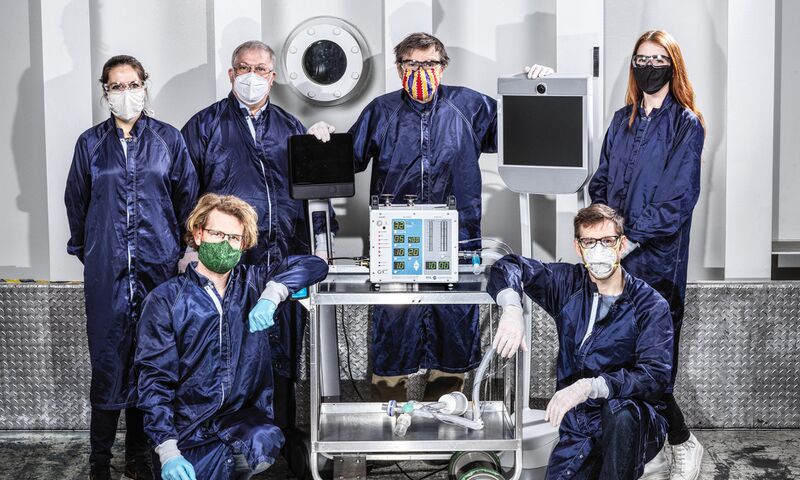Published on March 11, 2021
IAF Member NASA's Jet Propulsion Laboratory (JPL) reveals the behind the scenes of VITAL
Interview with Dr. Leon Alkalai, retired Manager, Office of Strategic Planning at Jet Propulsion Laboratory, California Institute of Technology.

On October 2020, the very first International Astronautical Congress – IAC Cyberspace Edition proudly welcomed its long-standing member NASA’s Jet Propulsion Laboratory (JPL) who reported on the recent successful development and production of ventilators and respirators called VITAL (Ventilator Intervention Technology Accessible Locally).
Developed by a number of JPL engineers in Southern California, as well as engineers across the NASA family of field centers, the VITAL initiative aimed at solving immediate problems created by the shortage of Personal Protection Equipment (PPE), respirators and ventilators, and in this respect, supporting patients with the most severe COVID-19 symptoms. The project, approved by the Food and Drug Administration (FDA), has been licensed to 28 manufacturers across the world on a no-fee basis during the duration of the COVID-19 pandemic.
The genesis of VITAL was found in the brainstorming of a group of engineers who looked into “how they could be of help to the public in general and to the world” before having the idea of “addressing the acute shortage of ventilators” stated Dr. Leon Alkalai, retired Manager, Office of Strategic Planning at Jet Propulsion Laboratory, California Institute of Technology. Dr. Alkalai who was part of this group, adds: “We contacted a local doctor, Dr. Michael Gurevich, who is an expert in the field respiratory treatment and who was treating Covid patients, and we held a brainstorming meeting at JPL and him, and then we just went to work. He gave us a tutorial on what kind of a machine he would like and our engineers started building it. More and more engineers heard about the effort and over a few days our team grew to a dozen and kept growing. Soon we had two prototypes, reached out to the FDA for guidance, other doctors, healthcare providers, medical ventilator companies, and more.”
Following the development of the devices, logically came the question of how to select the companies who will receive the VITAL technology as well as how to manufacture the equipment? All this was done through a “well-defined process”. First of all, the publicity of the design was done on social media and other media outlets. Then, a workshop attended by “several hundred participants from across the world” was organized. Dr Alkalai continues by explaining: “We requested that those interested in licensing our design register interest on our website and then we requested a 10-page proposal on how they plan to use the technology, how they will manufacture it, how they will field it and distribute to hospitals, and how they would service them. We asked for relevant experience and other support that they may have. Ultimately, we picked a total of 28 licensees, 8 in the USA and 20 internationally. The license is for free as long as it is used to fight the Covid pandemic. The license was given by Caltech, the parent company of JPL.”
In this tense period of global pandemic, NASA’s Jet Propulsion Laboratory (JPL) has made a tremendous impact in gathering human and material resources to overcome particular hard times. Dr. Alkalai states that “in Brazil, Russer has already completed human trials and are in the process of selling such ventilators. Also in India, they are being manufactured. A company in the US has teamed up to deliver ventilators in Africa and more.” Finally, in line with IAF’s mission, he positively declares that “space technology is of immediate benefit to society and help save lives”.